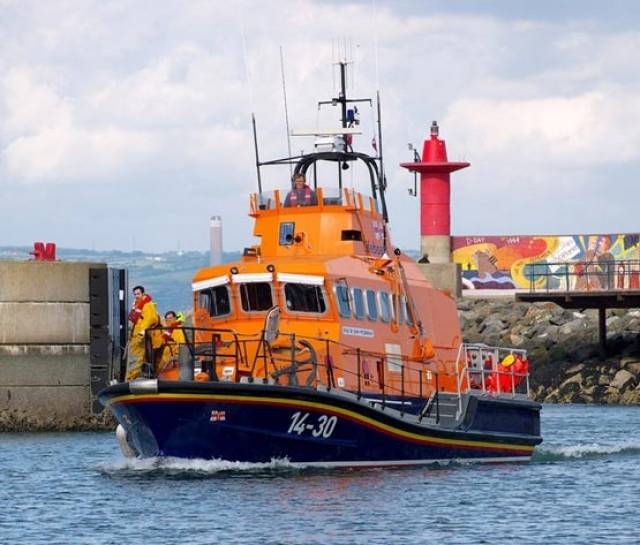#RNLI - The RNLI volunteer lifeboat crew from Larne carried out a training exercise with the Dublin-based Irish Coast Guard helicopter Rescue 116 off Ballygally Head yesterday (Sunday 10 April).
The Sikorsky S-92 initially visited Larne on 20 March last when they landed on Curran Point. The visit consisted of a briefing to Larne RNLI crew and included an orientation of the helicopter. The Larne Coastguard team was also present on the day, securing a safe landing zone for the helicopter.
Larne RNLI launched both their relief all-weather lifeboat Windsor Runner and inshore lifeboat Terry yesterday for the exercise to simulate recovery of a casualty to a helicopter in an emergency situation.
The lifeboats practiced manoeuvres at speed with Rescue 116. A crew member was winched into the helicopter and a casualty stretcher was transferred from the helicopter to the lifeboat. The helicopter winchman also landed onto the inshore lifeboat.
The RNLI regularly carries out exercises with other rescue agencies. It is this training that ensures the crew are able to work effectively with other agencies in an emergency situation, including medical evacuation of a casualty to a helicopter.
Larne RNLI coxswain Frank Healy said: "This was a very valuable exercise with the Irish Coast Guard. It's fantastic to step up the volume and breadth of our training coming into what is traditionally a busy summer period for call outs. Our thanks to the Irish Coast Guard for making this exercise possible."































































